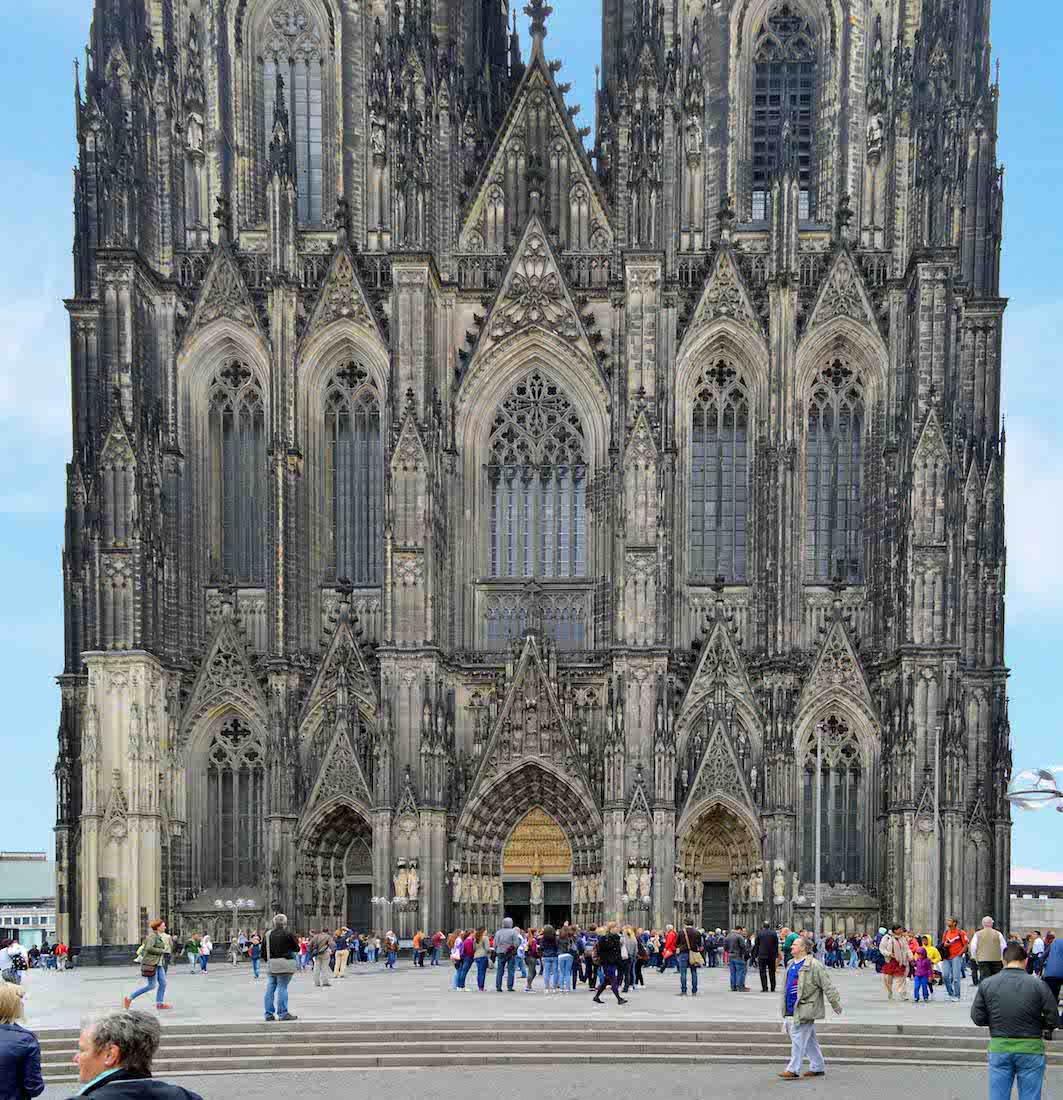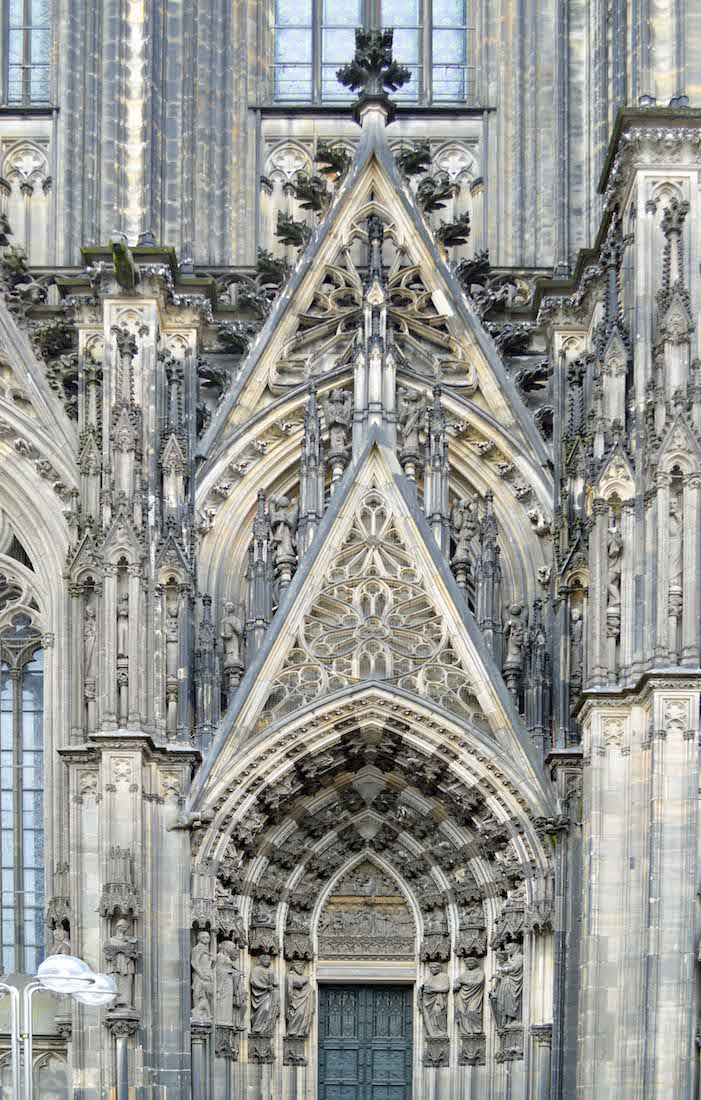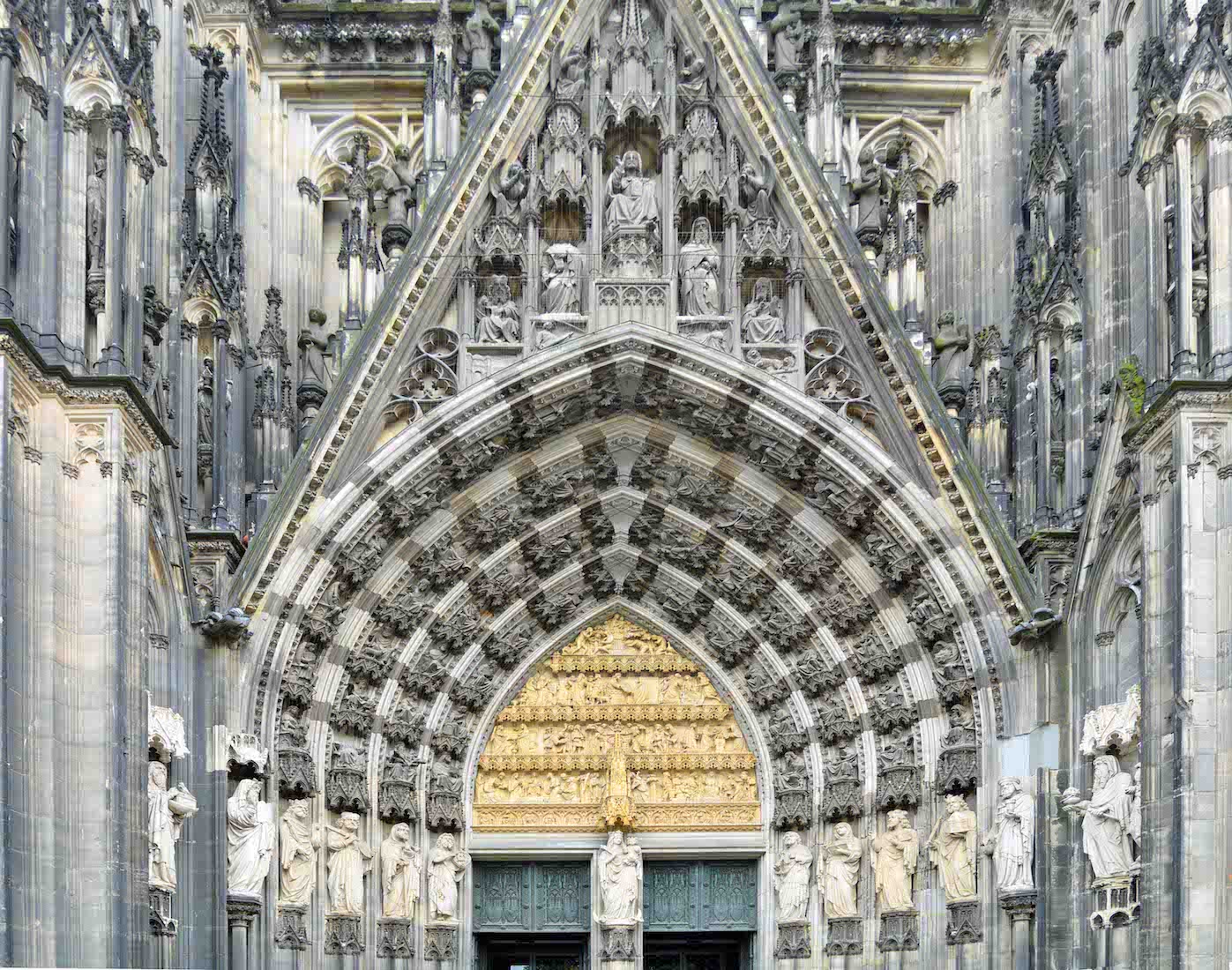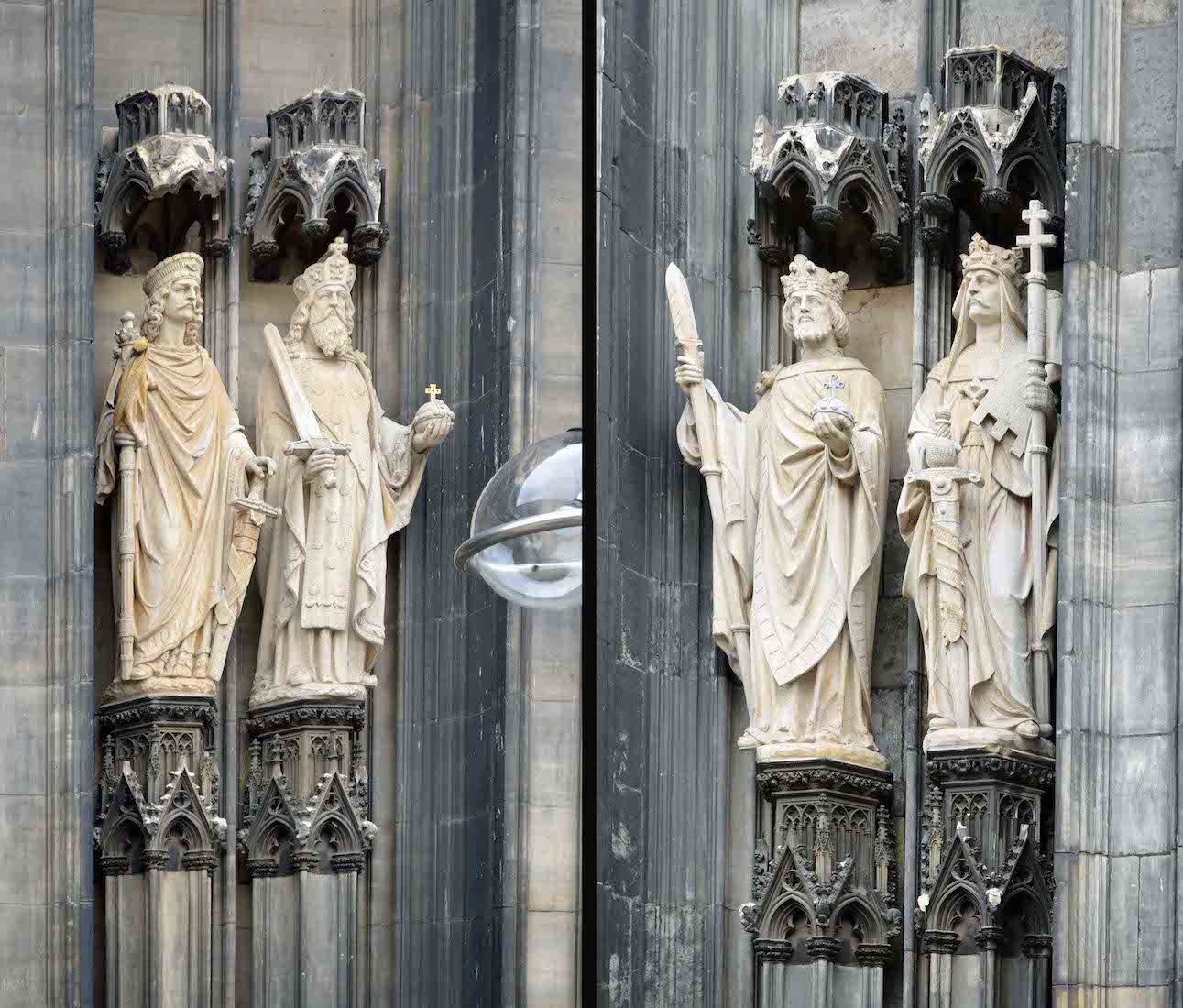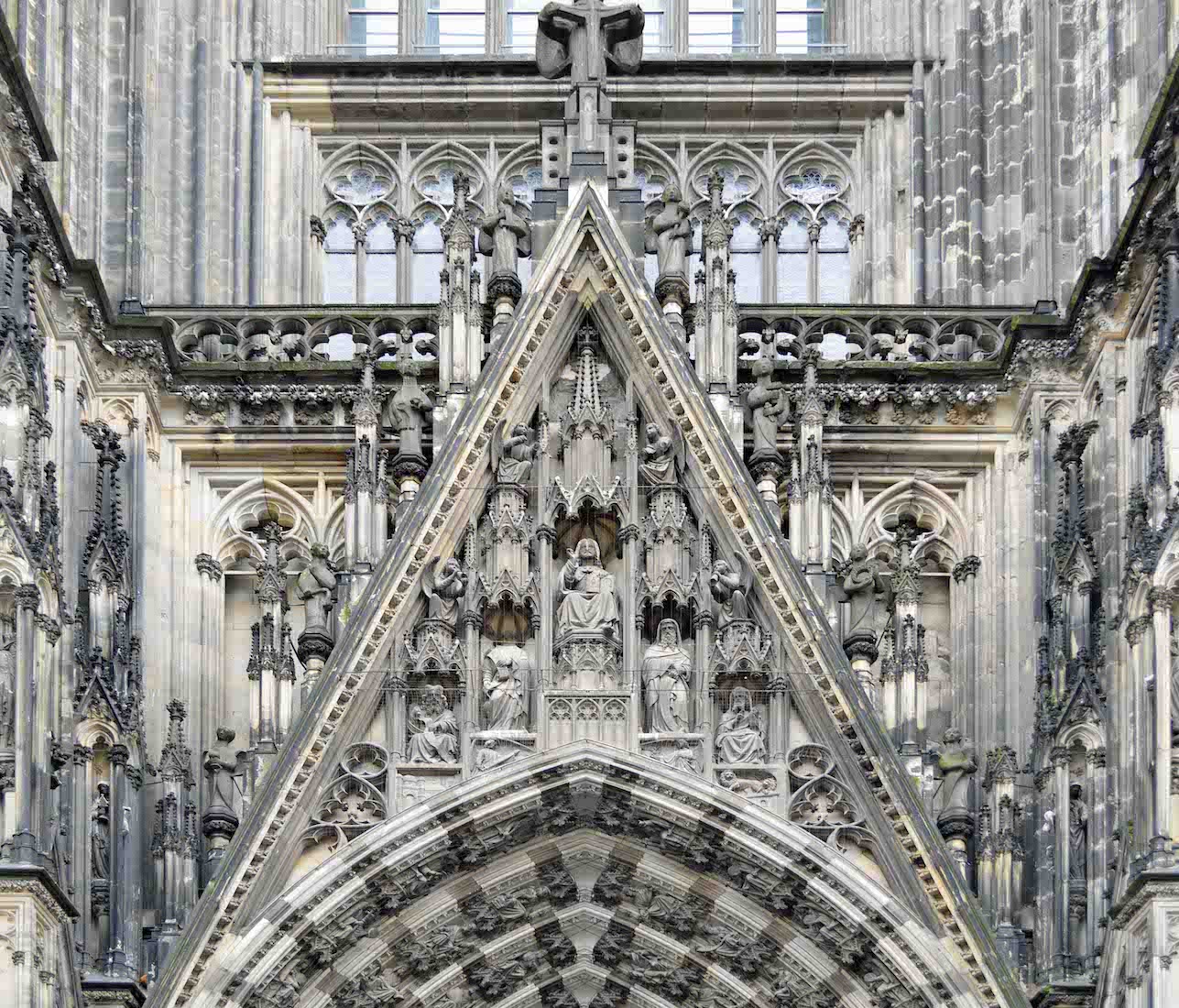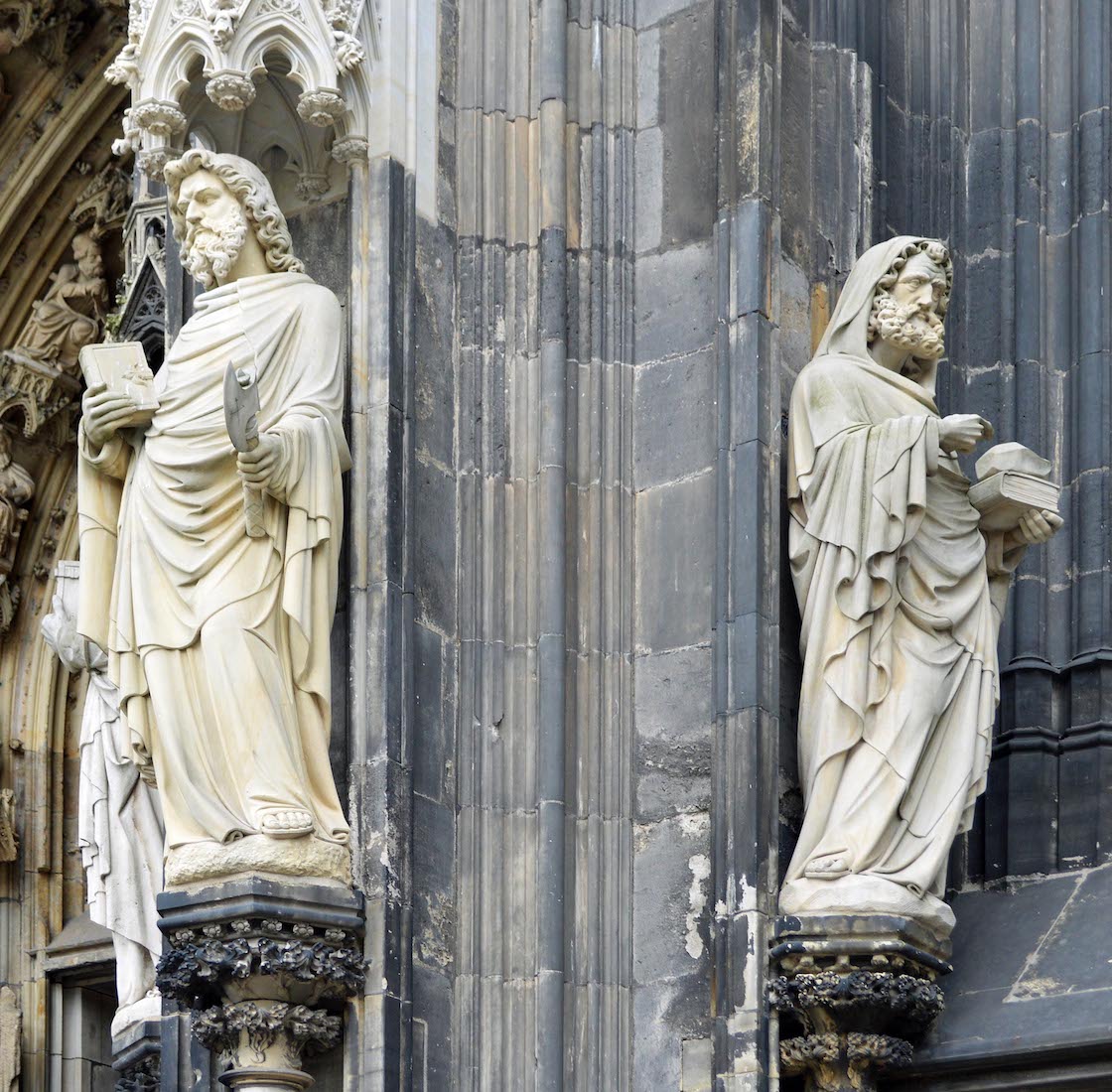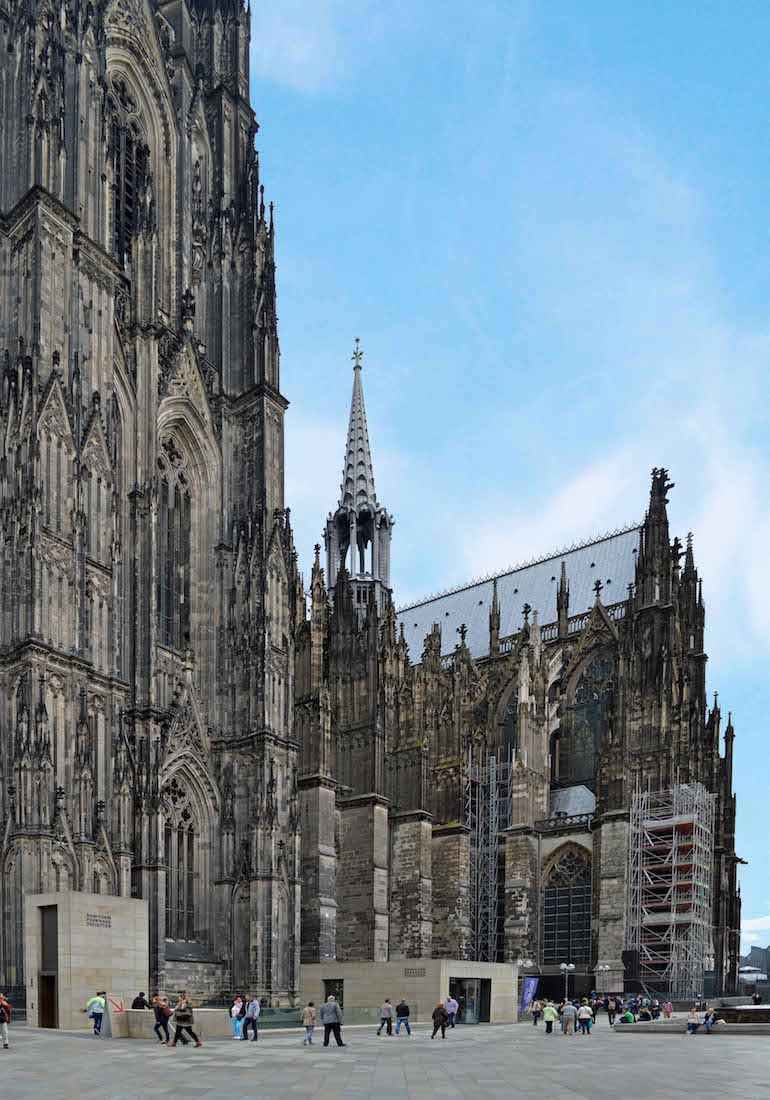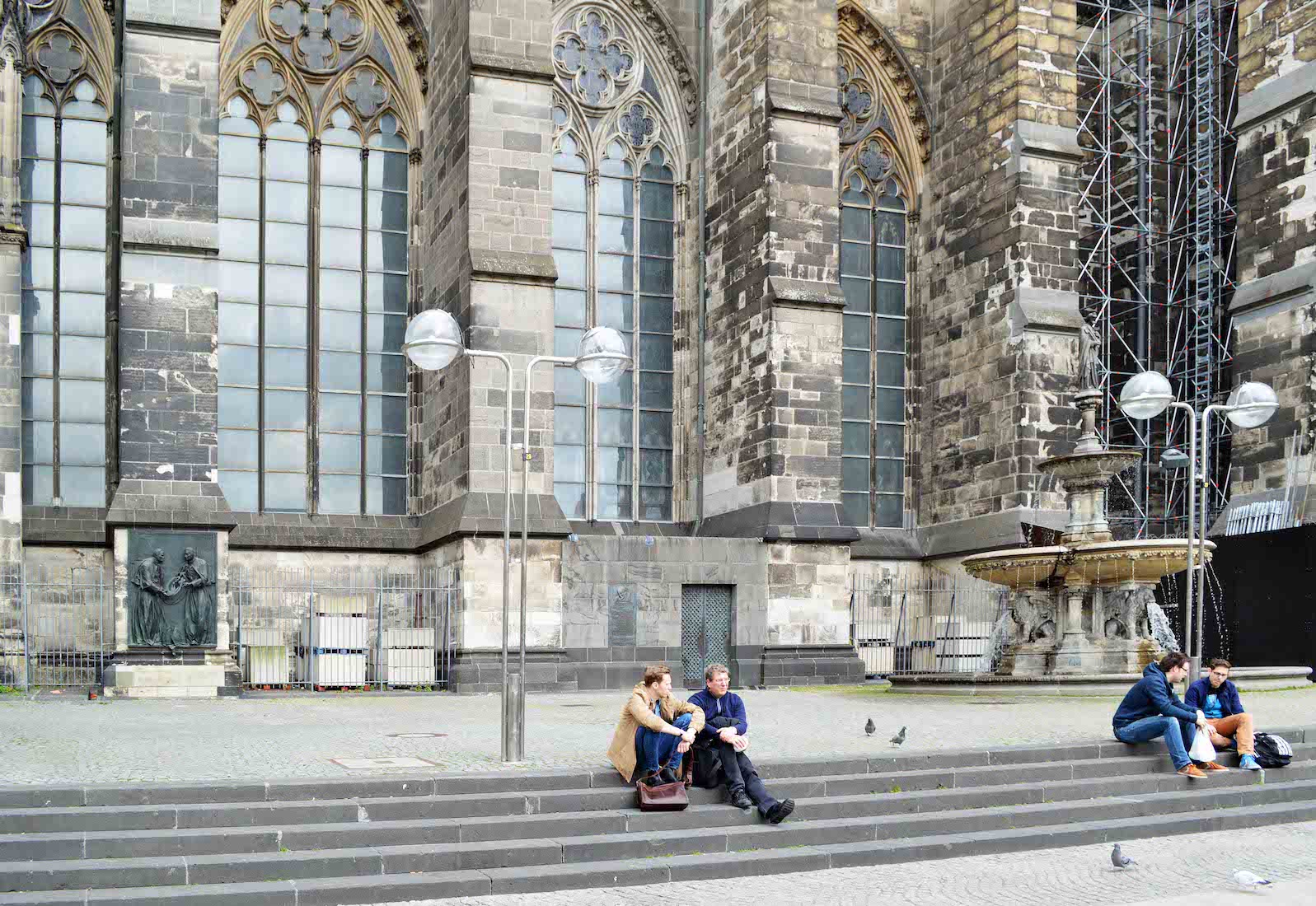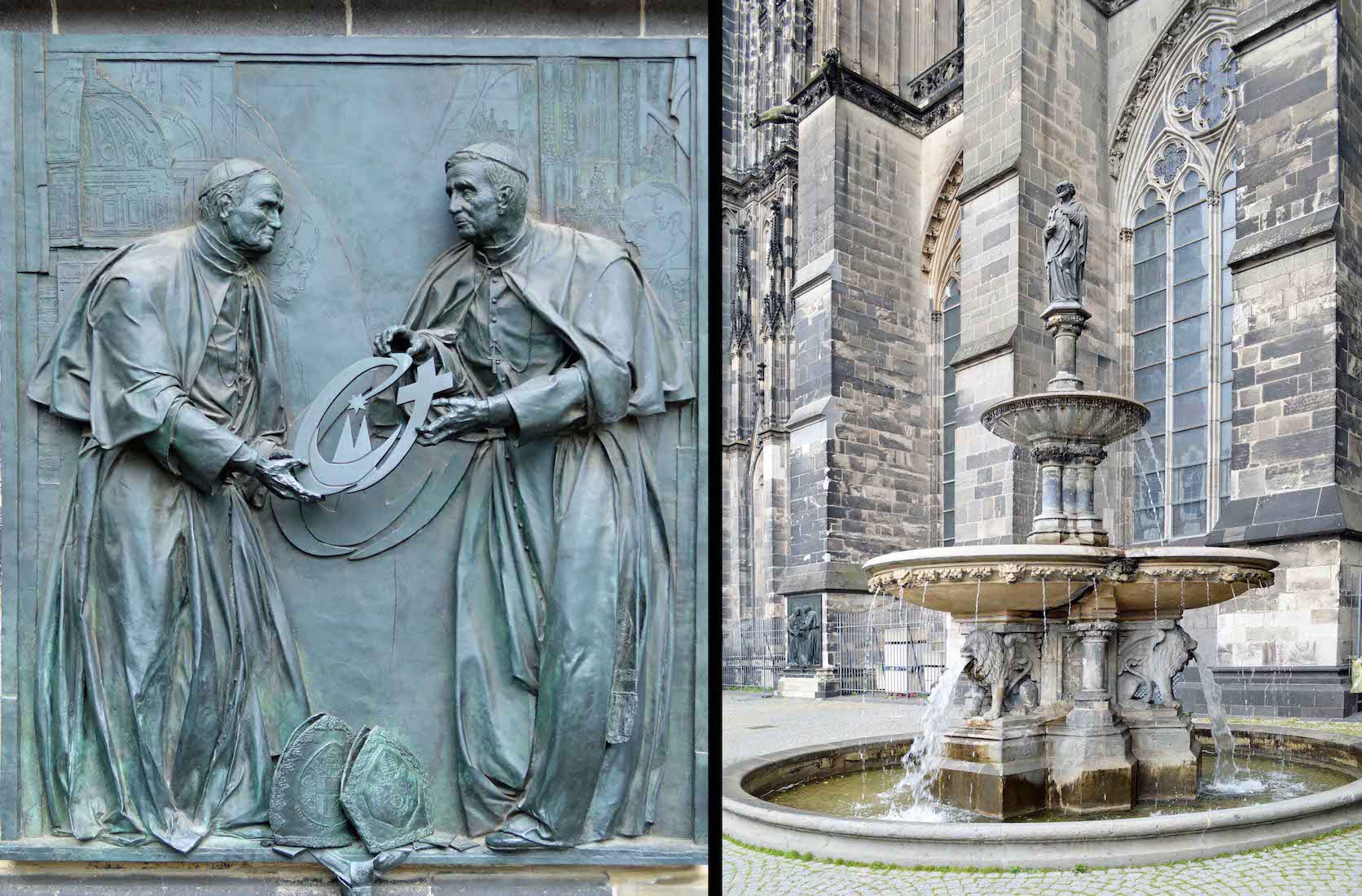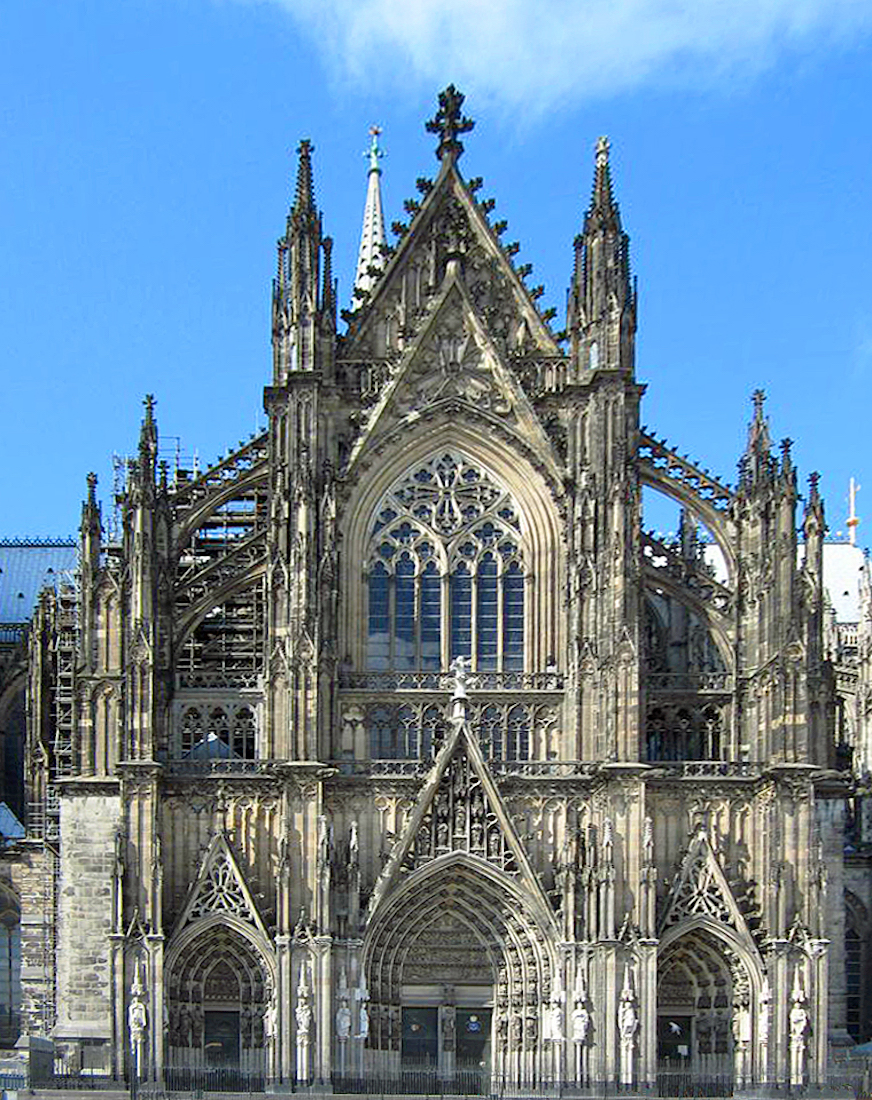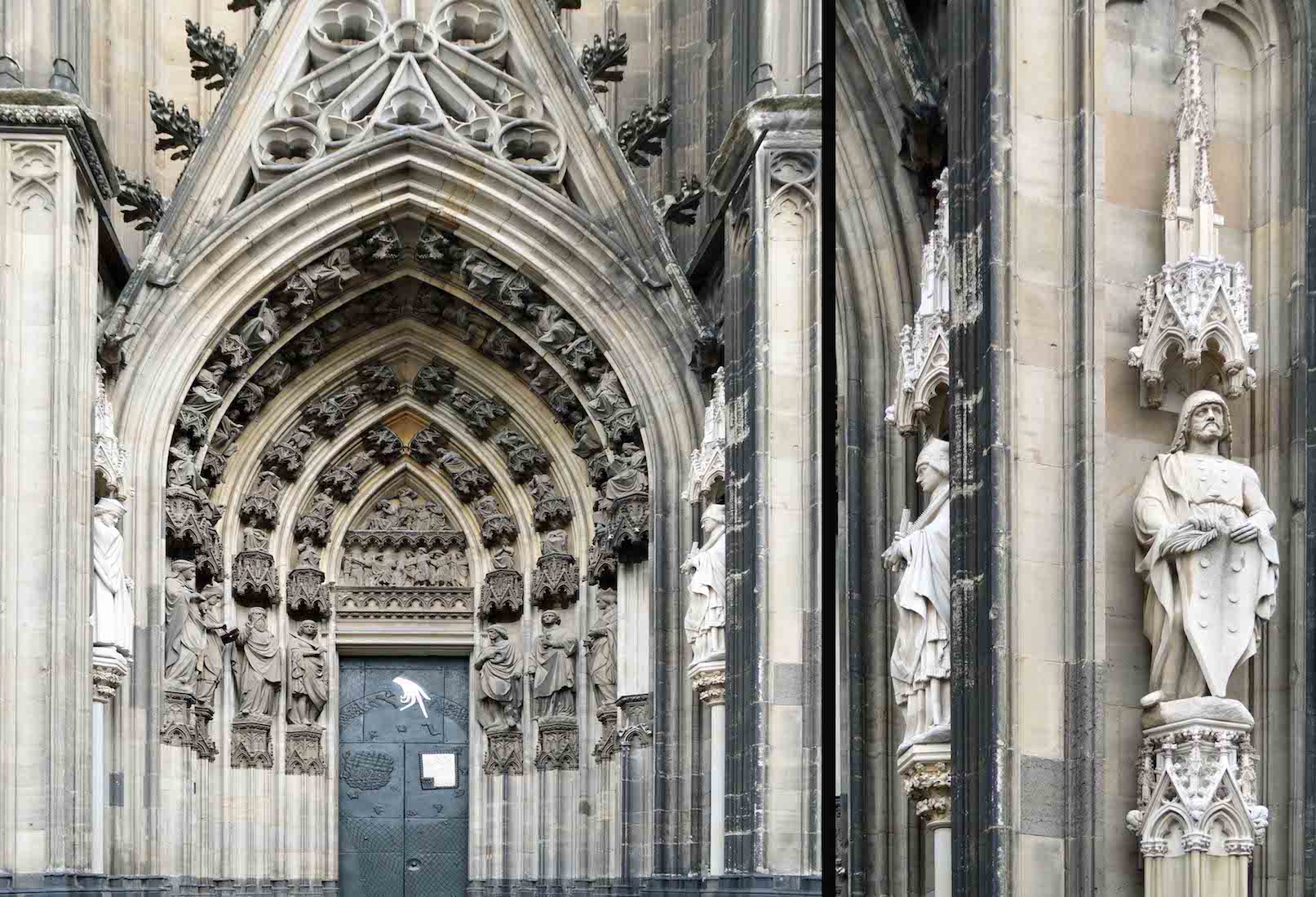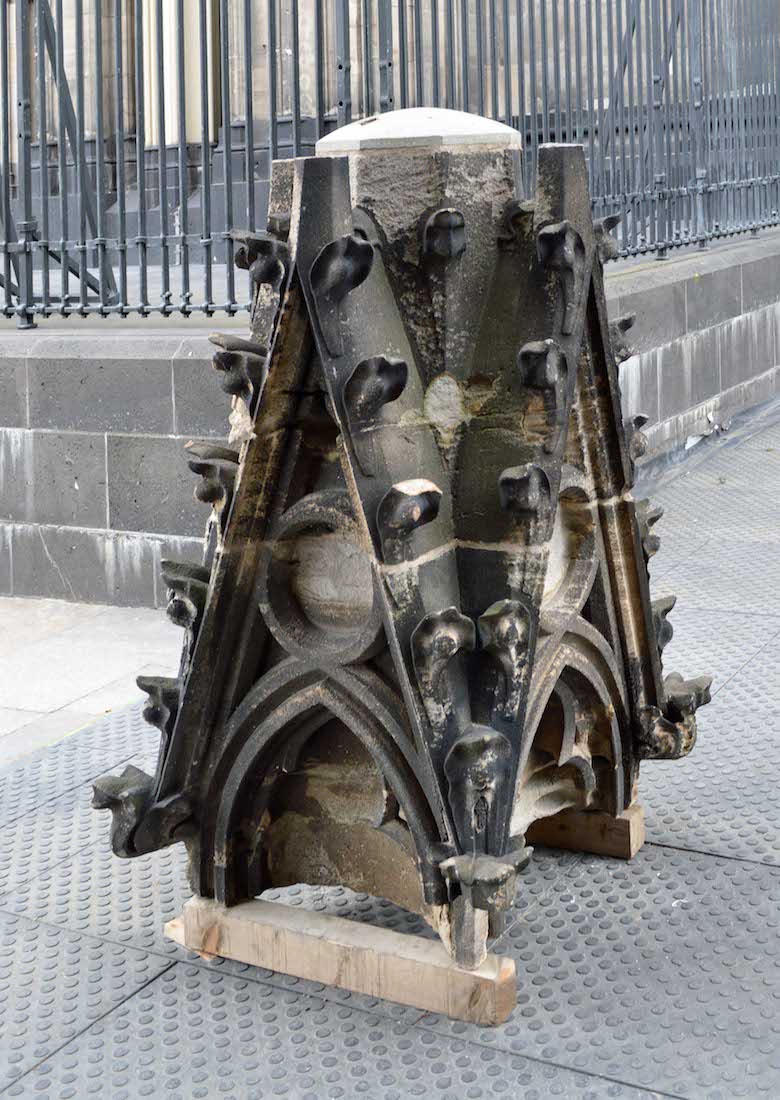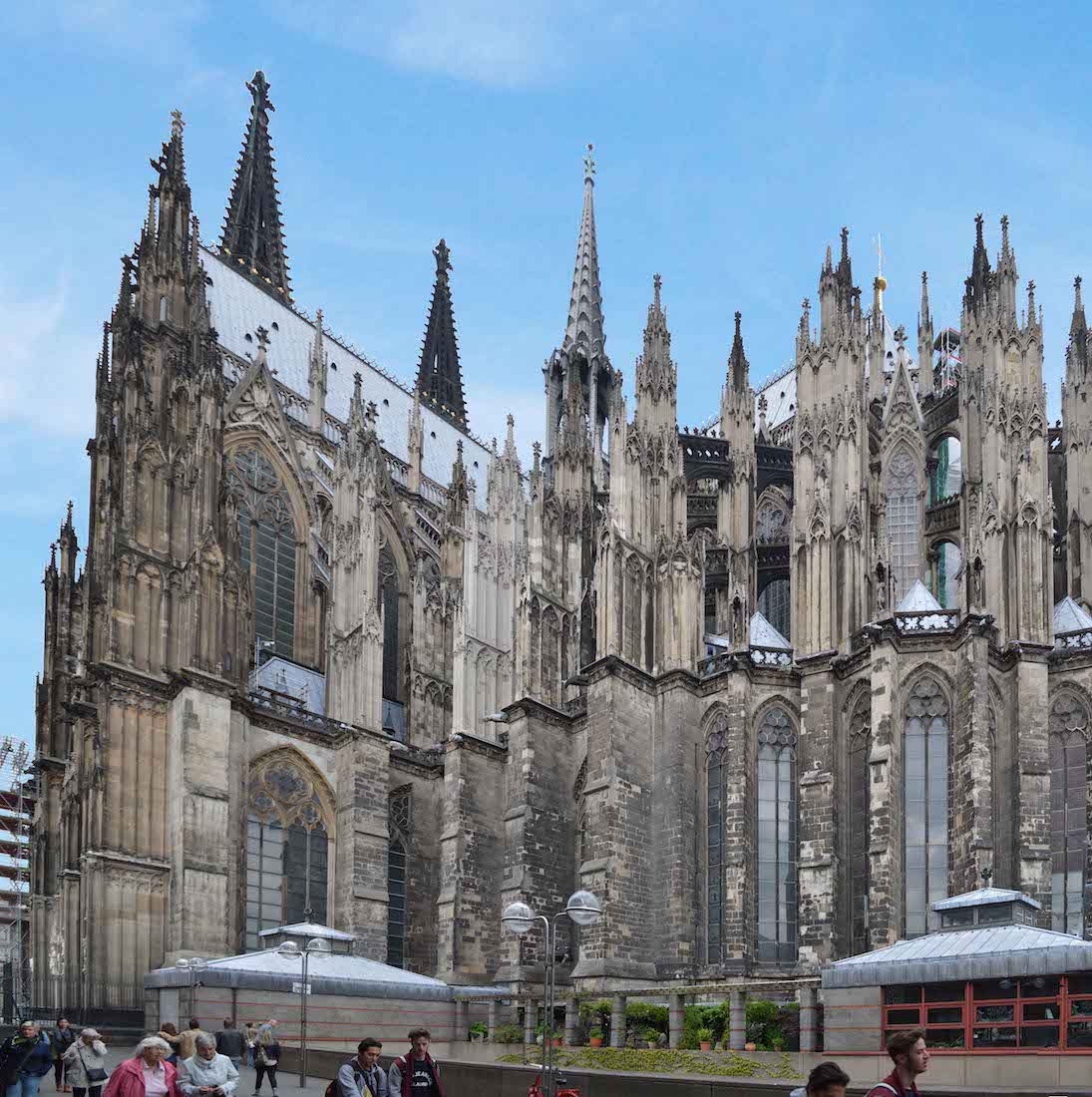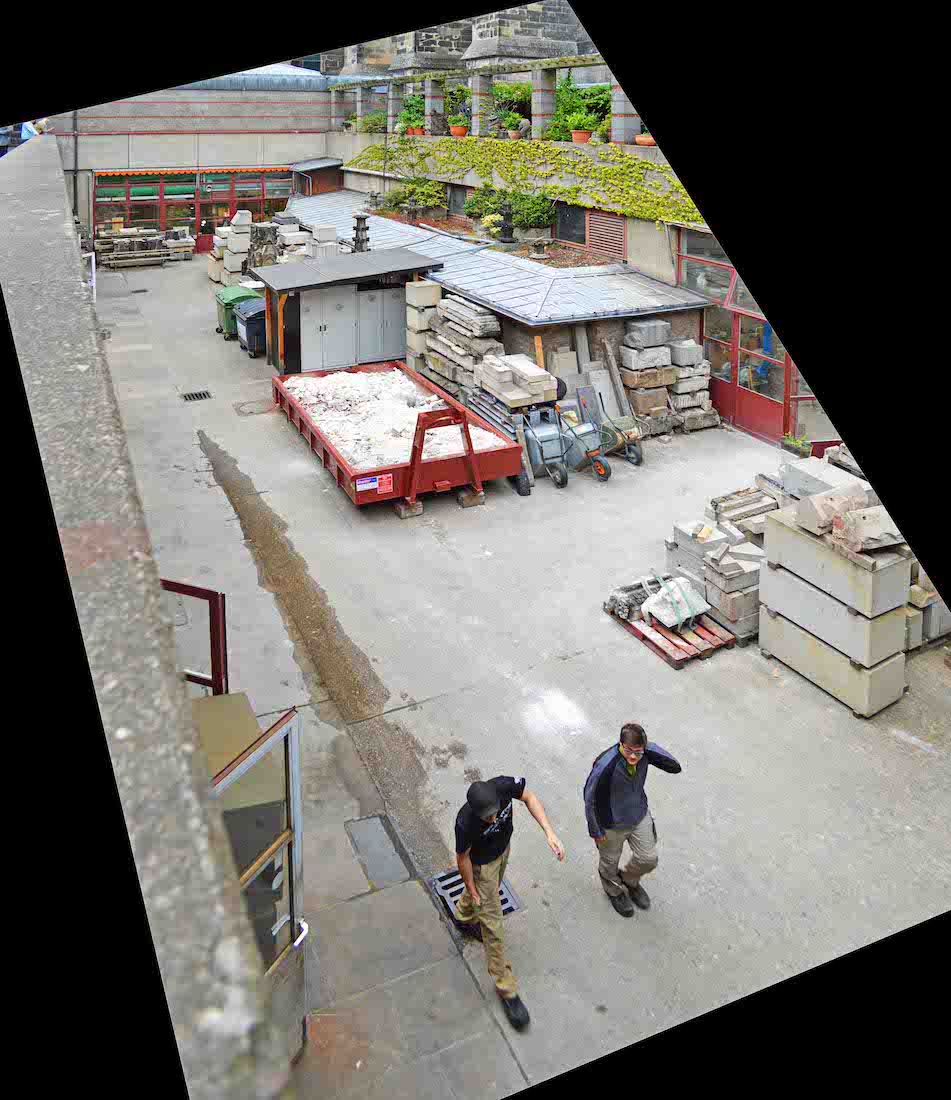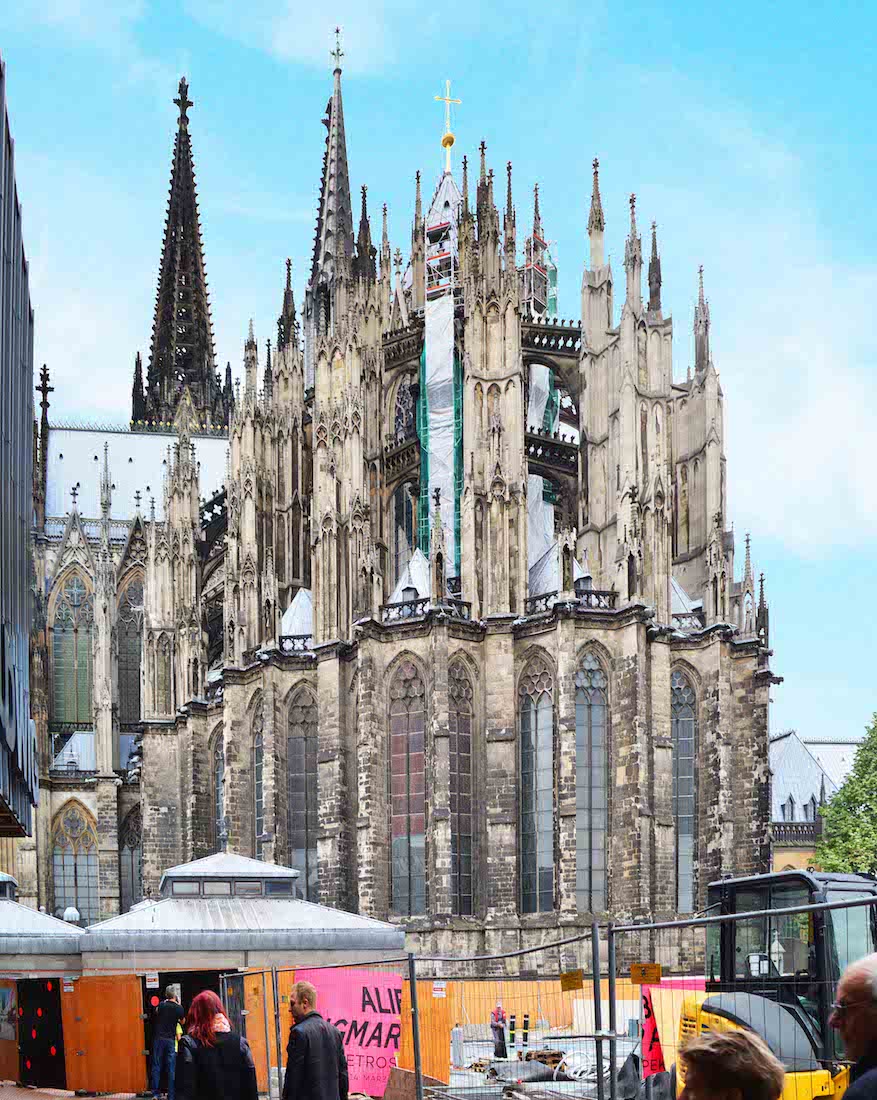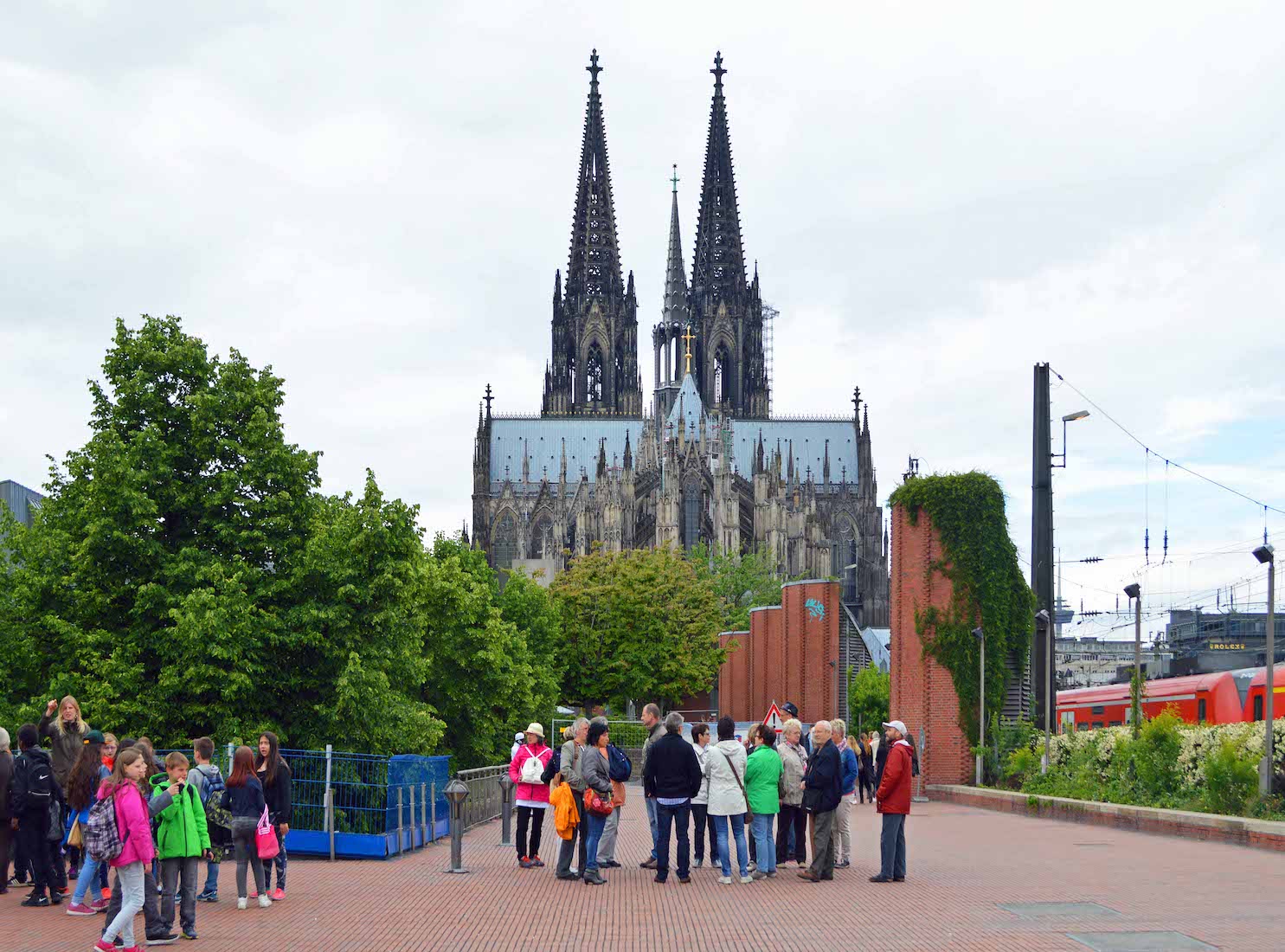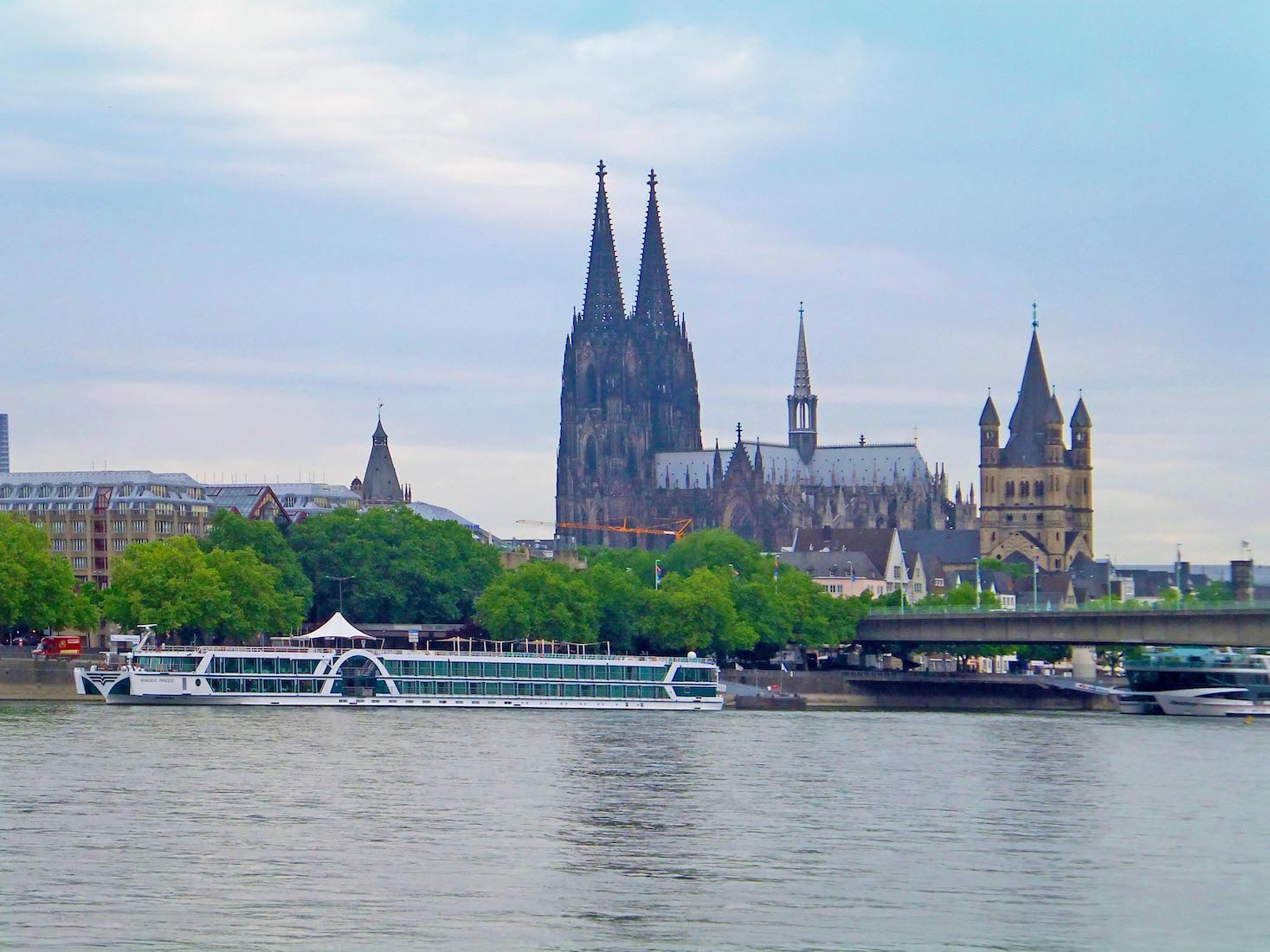
Cologne (in German, Köln) is an historic city on the banks of the Rhine River. The city is dominated by its immense cathedral – rather dark and foreboding outside – but a stunning treasure trove. PLAN
2. SATELLITE VIEW

The cathedral is sited exactly east-west, so our liturgical directions exactly coincide with the geographical setting. The Cathedral is cruciform in shape with two high Western towers. The grey roofed cross portion stands high above the surrounding twin covered aisles with their supporting flying buttresses.
3. WEST WALL
The word which comes to mind is ‘massive’. This Roman Catholic Cathedral is officially the High Cathedral of Saints Peter and Mary. It is a renowned monument of German Catholicism and Gothic architecture and is a World Heritage Site. It is Germany's most visited landmark, attracting an average of 20,000 people a day. Its two huge spires (not shown!) give it the largest façade of any church in the world.
4. NORTH PORTAL
There are three entries in the West wall. The one on the left is the Portal of Peter c. 1370-–1380 [1]. There is much detailed work around this entry. Five apostles stand on either side of the doors (in fact, one is missing). Due to their poor condition, the original statues are being replaced by copies in cast stone.
5. MAIN PORTAL
The central entry is the Portal of Mary [2]. Including the gable, it is 28 m / 92 ft high. Various Old Testament scenes are depicted in the tympanum. Between the doors is a statue of Virgin and Child. Figures on the left range from Adam to John the Baptist; on the right, Eve to Joseph.
6. WORLDLY RULERS
Further out and flanking the central portal are at left, Emperor Constantine and Heinrich II; and at right, Charlemagne and King Stephen of Hungary.
7. MAIN PORTAL GABLE
In the gable, Christ is enthroned as the Judge of the world between four prophets. On the outer slopes of the gable, angels hold the instruments of torture of Christ, with the cross at the apex.
8. SOUTH PORTAL
This portal is the Portal of the Three Magi. This portal was particularly damaged during WWII. The three magi appear on the right. The bronze doors of all three portals show Gothic tracery, angels, symbolic figures and script in delicate relief.
9. TWO FURTHER FIGURES
These two sculptures stand near the South portal. Cologne Cathedral features an extraordinarily large number of such figures.
10. SOUTH WALL
The South wall faces out onto a large paved area, and is the most photographed side of the Cathedral. Construction of the Cathedral commenced in 1248 and was halted in 1473, leaving it unfinished. Work restarted in the 19th century and was completed, to the original plan, in 1880. The Cathedral is the largest Gothic church in Northern Europe and has the second-tallest spires (after Ulm Minster).
11. SOUTH WALL
Along the South wall we come to an interesting plaque and fountain. Such a lot of history here ... . The foundation stone was laid on 15 August 1248, by Archbishop Konrad von Hochstaden. In the mid 14th century work on the West front commenced under Master Michael. This work halted in 1473, leaving the South tower complete up to the belfry level and crowned with a huge crane that remained in place as a landmark of the Cologne skyline for 400 years! .
12. PLAQUE AND FOUNTAIN
The sculpted plaque dates from 2014. It shows Pope John Paul II passing the church on to Pope Benedict. Pope John Paul II visited Cologne in 1980. St Peter holds the Keys of the Kingdom atop the nearby fountain.
13. SOUTH TRANSEPT
Like the West wall, the South transept has three entry portals, each elaborately decorated and with its own gable. Above, the flying buttresses are a characteristic of this style of Gothic architecture.
14. SOUTH TRANSEPT, CENTRAL PORTAL
The centre entryway is the Portal of Petrus [126]. The tympanum shows the Life and Passion of Christ. At the left is ‘the Bishop’s Door’, bearing the coat of arms of Cardinal Frings (1942–69). The left portal (not shown) is the Portal of Ursula.
15. PORTAL OF GEREON
This is the right portal [127] of the transept. The tympanum shows the martyrdom of St Gereon and his followers. (St Gereon was beheaded in Cologne for refusing to sacrifice to pagan gods.) Along the jambs are saints who were active or venerated in Cologne or in the Rhineland.
16. FINIAL
Standing near the South East corner of the Cathedral is this ‘small’ finial – a reminder of the immense size of this building. The measurements of the Cathedral are: Length 144.5 m (474 ft); Width 86.25 m (283 ft); Spire height 157 m (515 ft). There are 11 bells.
17. SOUTH EAST VIEW
From the South East the Cathedral appears as a conglomeration of turrets and spires, with the South transept at left, and various chapels radiating out at right. At the top we can see the more delicate flèche rising up above the crossing.
18. STONE YARD
Walking East from the Cathedral we look down on the stone yard. Repair and maintenance work is constantly being carried out in one or another section of the building, which is rarely completely free of scaffolding, as wind, rain, and pollution slowly eat away at the stones. The Dombauhütte, established to build the cathedral and keep it in repair, is said to employ the best stonemasons of the Rhineland. There is a common joke in Cologne that the leader of the Dombauhütte, the master builder of the Cathedral, has to be Roman Catholic and free from giddiness.
19. EASTERN APSE
The maintenance and repair of old buildings, and especially old cathedrals, is a continual drain on funds and resources. But what is the alternative?
20. MORE DISTANT VIEW
Standing back a distance on the Hohenzollern Bridge gives us the opportunity to appreciate the grandeur of the Cathedral. In 2004 the Cathedral was placed on the ‘World Heritage in Danger’ list, as the only Western site in danger, due to plans to construct a high-rise building nearby, which would have visually impacted the site. It was removed from the list in 2006, following the authorities’ decision to limit the heights of buildings constructed near the cathedral.


